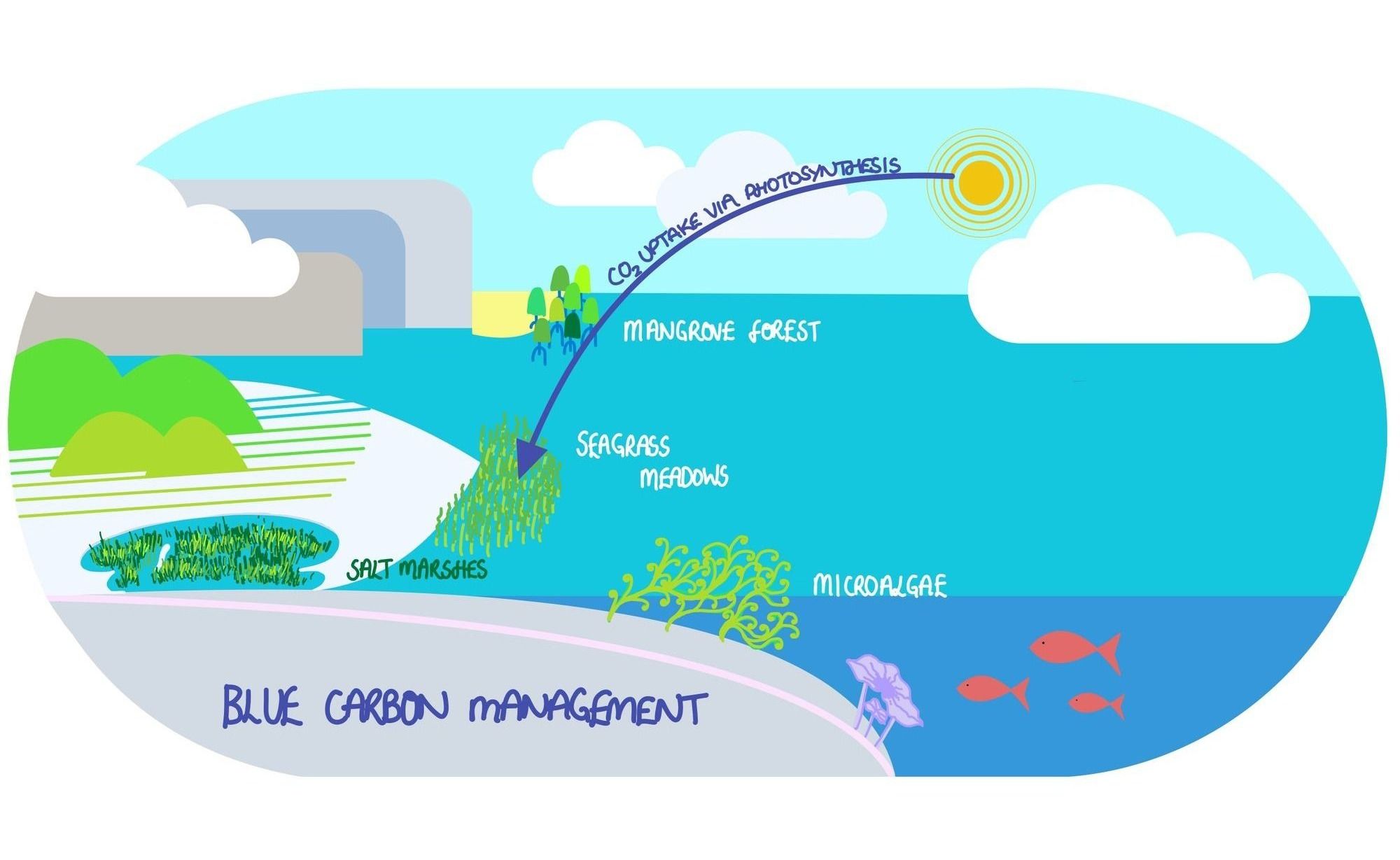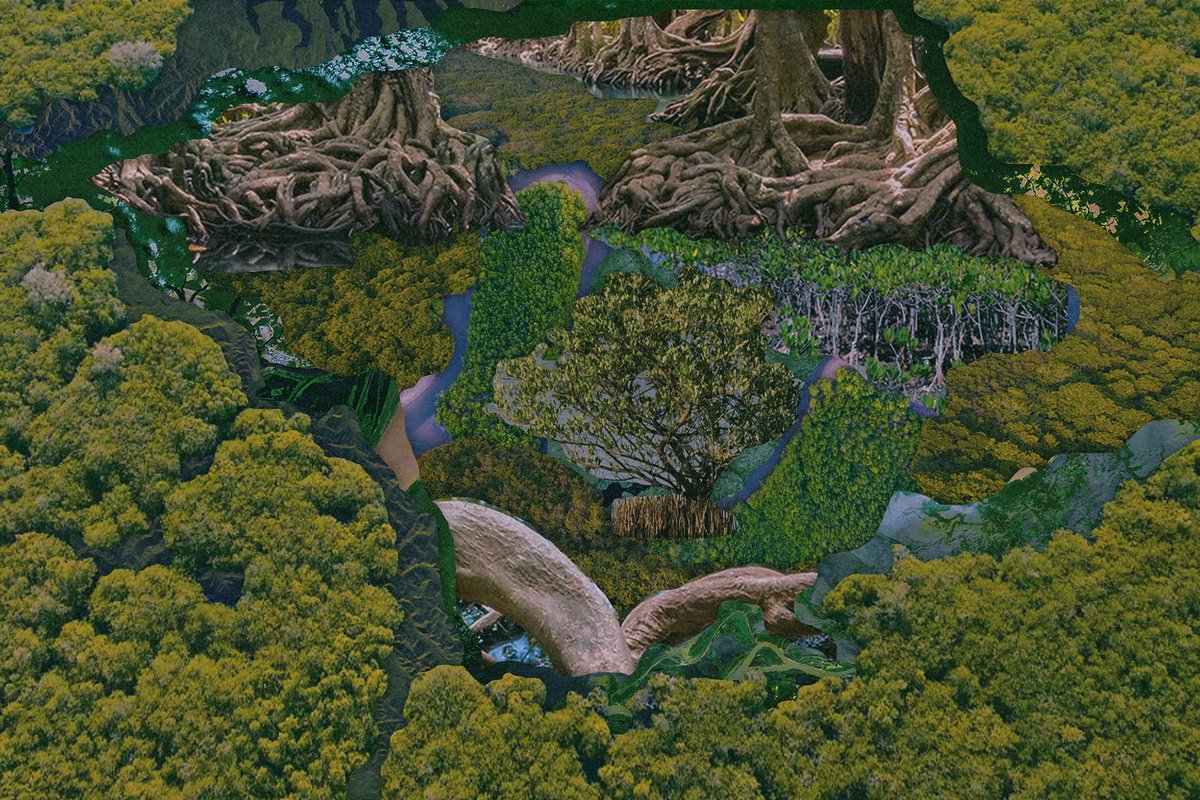Blue Carbon Ecosystems are natural carbon sinks that have the potential to store huge amounts of CO2 - recent conservation efforts have developed methods to monitor their health and measure their carbon storage potentials. By Ewan Yeo.
As environmental policies are weakened globally, the world faces a devastating future of climate disaster. If greenhouse gas (GHG) emissions of gas guzzling industries are not regulated further, carbon capture is expected to become an increasingly important tool in the fight against global boiling. However, existing technologies are reported to be so energy intensive they defeat the purpose of their existence.
The need for nature-based solutions which are proven to be effective, so called Natural Climate Solutions (NCS), has become increasingly urgent. One promising avenue is the conservation and restoration of coastal ecosystems, known as Blue Carbon Ecosystems (BCE). These have the potential to sequester large amounts of carbon in an effort to mitigate climate change. Until now, accurately measuring and monitoring carbon storage in BCE has been a challenge but a new study highlights the potential of remote sensing technologies as a possible solution. Scaling up this technology could serve as a vital tool for effective NCS implementation.
The study shows that remote sensing technologies can provide a cost-effective and efficient method for monitoring BCE which span large areas. This is especially important as ‘BCE are expected to represent 8-33 billion tonnes of carbon’. Blue carbon inventories consist of biomass – the potential energy embodied in organic matter, and solid organic carbon found in soil. The latter ‘is the largest pool, accounting for between 68% (mangroves) and 98% (seagrasses) of the total organic carbon’. It has been found that carbon sequestration rates in coastal ecosystems are much higher compared to their terrestrial counterparts. Furthermore, soil organic carbon content in blue carbon ecosystems does not always decline with increasing soil depth and age. This indicates that BCE could be a long-term, natural solution in the struggle against climate change.
The diversity between different BCEs requires precise remote sensing to ascertain their carbon storage potentials. In a study, different remote sensing technologies were used to map three key BCEs: mangrove forests, tidal marshes, and seagrass meadows.

Unmanned aerial vehicles (UAVs) were used to map mangrove forests, which can be challenging to access due to their location in remote, inaccessible areas. Equipped with Synthetic Aperture Radar (SAR), this sensor technology can collect data in all weather with ‘their capacity to “see through clouds” and capture information about the structural characteristics of habitats. It therefore offers promise in continuous data coverage in high cloud-cover areas. Compared to traditional ground surveys, the use of UAVs was found to be less labour-intensive and more precise by allowing for high-resolution mapping of mangrove forests.
Alternatively, ecosystems like tidal marshes which are subject to frequent flooding were mapped using hyperspectral imaging. This technique is sensitive to the small-scale temporal changes in vegetation coverage and species composition that could have larger consequences for carbon storage. This method was found to be more accurate than traditional methods such as visual surveys, which can be biassed and time-consuming. The use of hyperspectral imagery also allowed for the identification of areas with high carbon storage potential that could be specifically targeted for conservation efforts.
Finally, seagrass meadows were mapped using seismo-acoustic techniques, which involves the use of sound waves to map the seafloor to detect changes in sediment depth and structure. This method was found to be highly accurate and efficient, allowing for the detection of changes in seagrass biomass and density, which are important factors in determining the carbon storage potential of these ecosystems.
Overall, the study emphasises the potential of remote sensing technologies to increase measurement and monitoring of carbon storage in BCE's with precision, scalability, and cost-effectiveness. This offers a viable response to the problem of a standardised set of procedures for tracking and quantifying blue carbon storage.
However, more needs to be done to preserve these indispensable ecosystems. The world has lost over 50% of mangrove forests since the 1990s - and has continued to reduce by as much as 3% each year. The effects of rising sea levels and increased urbanisation are squeezing BCEs out of existence.
Although the remote sensing technologies could unlock blue carbon’s full potential as a nature-based solution, BCEs themselves must be protected and preserved if they are to contribute in the fight against climate change.
References:
Cover Image: V. Rajavat, UCL Science Magazine Graphic Designer
Environmental policies weakened globally: Heffman, H., Mason C., Wheeler, B. (2023, September 20) Rishi Sunak considers weakening key green policies BBC News, retrieved 12/10/2023 https://www.bbc.co.uk/news/uk-politics-66857551
Natural Climate Solutions: Cook, S. (2017, October 15). What are natural climate solutions? The Nature Conservancy. Retrieved April 20, 2023, from https://www.nature.org/en-us/what-we-do/our-insights/perspectives/natural-climate-solutions/
Blue Carbon Ecosystems: The Blue Carbon Initiative. (2023). What is Blue Carbon? — The Blue Carbon Initiative. The Blue Carbon Initiative. Retrieved April 20, 2023, from https://www.thebluecarboninitiative.org/about-blue-carbon
Measuring and Monitoring carbon storage: Brogan, C. (2022, July 19). Carbon captured and stored since 1996 is significant but overestimated | Imperial News. Imperial College London. Retrieved April 20, 2023, from https://www.imperial.ac.uk/news/238411/carbon-captured-stored-since-1996-significant/
BCE could store up to 8 - 33 billion tonnes of carbon: Malerba, M. E., Costa, M. D. d. P., Friess, D. A., Schuster, L., Young, M. A., Lagomasino, D., Serrano, O., Hickey, S. M., York, P. H., Rasheed, M., Lefcheck, J. S., Radford, B., Atwood, T. B., Ierodiaconou, D., & Macreadie, P. (2023, February 6). Remote sensing for cost-effective blue carbon accounting. Earth-Science Reviews, 238, 16. Science Direct. https://doi.org/10.1016/j.earscirev.2023.104337
Does not always decline: Macreadie, P. I., Anton, A., Raven, J. A., Beaumont, N., Connolly, R. M., & Friess, A. (2019, September 5). The future of Blue Carbon science. Nature Communications, (3998). Nature. https://doi.org/10.1038/s41467-019-11693-w
A long-term, natural solution: Macreadie, P. I., Costa, M. D. P., Friess, T. T., Kellaway, D. A., Kennedy, J. J., Lovelock, H., Serrano, C. E., & Duarte, O. C. M. (2021, December 1). Blue carbon as a natural climate solution. Nature Reviews Earth and Environment, 826–839. Nature. https://doi.org/10.1038/s43017-021-00224-1
In a study: Malerba, M. E., Costa, M. D. d. P., Friess, D. A., Schuster, L., Young, M. A., Lagomasino, D., Serrano, O., Hickey, S. M., York, P. H., Rasheed, M., Lefcheck, J. S., Radford, B., Atwood, T. B., Ierodiaconou, D., & Macreadie, P. (2023, February 6). Remote sensing for cost-effective blue carbon accounting. Earth-Science Reviews, 238, 16. Science Direct. https://doi.org/10.1016/j.earscirev.2023.104337
Lost over 50% of mangrove forests since the 1990s: Scott, M., & Lindsey, R. (2022, September 29). Understanding blue carbon | NOAA Climate.gov. Climate.gov. Retrieved October 11, 2023, from https://www.climate.gov/news-features/understanding-climate/understanding-blue-carbon





